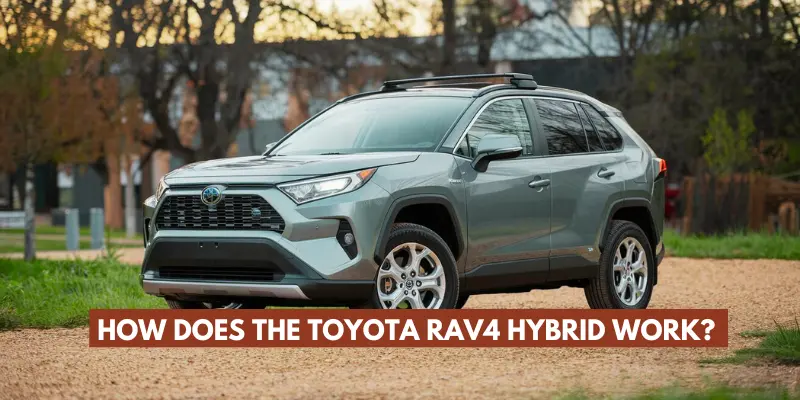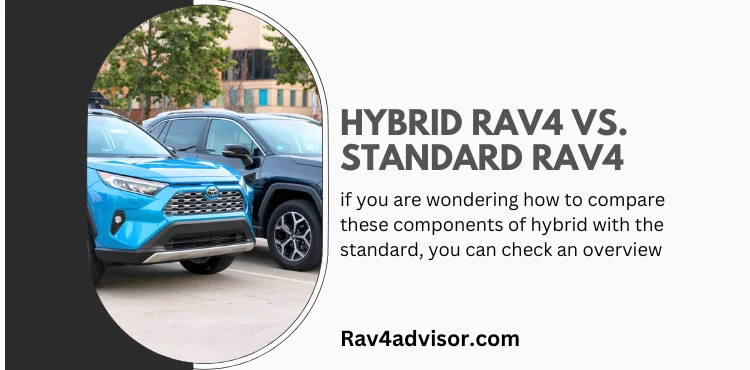How Does the Toyota RAV4 Hybrid Work?
Updated: 2 Oct 2024
170
Have you purchased a new Toyota RAV4 Hybrid and are curious about how it works? That’s Cool.
Having such an innovative SUV demands care, which couldn’t be possible without knowing its working mechanism.
With hybrid vehicles, you can enjoy the blend of gasoline and electric power and reduce emissions, making your ride smooth, efficient, and eco-friendly.
Let’s discuss the other details of the Hybrid Synergy Drive system and the other perks of having a Rav4 hybrid.

Understanding the Toyota RAV4 Hybrid: How It Works
If we talk about the central driving system that keeps Toyota hybrid vehicles working, it is the Toyota Hybrid Synergy Drive. This component combines the
- Gasoline engine
- Electric motor
Due to this combination, we call it “HYBRID.”
The electric motor facilitates low-speed driving. At the same time, if you are adventurous enough to go high and far, this system switches to the gasoline engine to provide extra power.
Unlike plug-in hybrids, the RAV4 Hybrid recharges itself through a self-charging system, so there’s no need to plug it in.
Hybrid Components
Various components in a hybrid system have their unique functioning and role in the overall performance of the hybrid vehicles. Some of them are:
The Engine and Motors
Now, after the synergy drive, the two most essential components of hybrid vehicles are the
- Engine
- Motor
Both of these components have their functioning and designed responsibilities as
RAV4 Hybrid Engine
- Have a 2.5-liter gasoline engine
- Give power to the vehicle to go at higher speeds or extra power
- Stay inactive on low-speed drives
Electric Motor
The hybrid has two electric motors;
- Front Motor
- Another in the rear
These electric motors are proposed to;
- Provide power to the all-wheel-drive system
- Enable the RAV4 Hybrid to transition between electric and gasoline power
- It brings an efficient and controlled driving experience
Also, check more details in the Video below:
Hybrid Battery System and Charging
To charge a hybrid, you need to understand the battery first. Hybrid vehicles usually have a nickel-metal hydraulic (Ni-MH) battery for electric motors. With this battery, hybrid rav4s do not need to be plugged in.
Instead, it uses regenerative braking that manages high and low energy in hybrid models.
It mainly purposed to
- Manage the kinetic energy when the vehicle slows down or brakes
- Use this energy to convert into electrical energy (that gets stored in the battery)
- Keep the battery charged without needing an external power source
Toyota’s Self-Charging Hybrid System
One feature that makes the Hybrid Rav4 an attractive option is its ability to self-charge the hybrid system.
This suits the lazy 😉 Drivers or those who love luxurious vehicles because this feature adds convenience and efficiency.
RAV4 Hybrid Plug-In Version
If you have purchased an RAV4 Prime, you must know that Toyota designed it as a plug-in hybrid. This means you could charge the battery manually via an external power source.
With this model, you could get an extended electric-only driving range of up to 42 miles per charge.
Note: Unlike the RAV4 Hybrid, the Prime offers flexibility in both electric and hybrid power modes.
Driving Modes and AWD Performance
One of the another unique feature that adds to the versatility of the hybrid vehicles is their ability to switch between different driving modes, including:
- Eco Mode: maximizes fuel efficiency
- SportMode: provides a more dynamic driving experience
- EV mode: to operate the vehicle on battery alone
The hybrid’s AWD system is designed for rear-wheel drive and uses an electric motor to enhance the vehicle’s traction in stricter driving conditions.
Comparison: Hybrid RAV4 Vs. Standard RAV4

Now, if you are wondering how to compare these components of hybrid with the standard, you can check an overview here:
Comparison between Hybrid RAV4 and Standard RAV4
| Feature | Hybrid RAV4 | Standard RAV4 |
| Fuel Economy | Around 40 MPG (combined) | Around 28 MPG (combined) |
| Acceleration | Quicker due to instant electric torque | Standard acceleration, reliant on gas engine |
| Power Source | Combination of electric motor and gasoline engine | Gasoline engine only |
| Charging System | Self-charging (regenerative braking) | No charging required |
| Convenience | No need for external charging | No charging required |
| Maintenance Costs | Similar or slightly lower than standard RAV4 | Standard maintenance costs |
| Environmental Impact | Lower emissions due to hybrid technology | Higher emissions due to gas engine |
| AWD Performance | Electric motor powers rear wheels in AWD | Traditional gas-powered AWD |
| Cost | Higher initial cost | Lower starting price |
| Electric-Only Driving | Available briefly at low speeds (EV mode) | No electric-only capability |
By this comparison, you must have realized that the Rav4 hybrid models are more fuel-efficient than the standard ones. They also reduce maintenance costs and are healthy for the environment.
Conclusion
So, overall, Toyota hybrid vehicles are easy to operate and have straightforward working mechanisms. This guide has given you a quick overview of all the components of hybrid cars.
That is why most customers consider it an excellent choice for drivers who want a versatile SUV that delivers fuel efficiency, reduced emissions, and a smooth driving experience.
Have your next drive as impressive as the Rav4 hybrid!
Please Write Your Comments